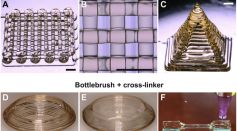CHEMISTRY
Apollo Rock Samples Analysis Reveals Insights On Early Moon History
Bacteria Regeneration May Be Key to Building Stronger Cars, Airplanes, and Armors
Scientists Create Bendable Concrete and Carbon-Infused Cement Mixes to Curb Carbon Emissions

Experts Say Love at First Sight Exists; How Long Does It Take For Someone Fall in Love?

Why Flerovium Super Heavy Element Might Not Have the Long Life Scientists Were Hoping For

CRISPR: Improving Methods of Gene Function Studies

Researchers 3D-Printed Super Elastic Elastomers That Resembles Human Tissue
Bose-Einstein Condensate: Everything To Know About the Fifth State of Matter
Researchers Report a Mysterious Organic Material That Catalyzes and Reduces Chemical Waste

‘Goopy’ New Paste Can Ultimately Unlock Energy Potential of Clean Energy, Study Finds

Study Reveals Massive, Unidentified Hydrocarbon Cycle Hidden in Global Oceans
Never Eat the "Clean" Part of a Moldy Bread, Science Dictates
Scientists Study Einsteinium, Debris of Nuke Tests in the 50s
New State of Matter: Unique Neutral Electron Might Have Been Discovered
Most Popular

Photosynthesis Made Easy: Light Reactions, Calvin Cycle, and Everyday Examples

Can We Bring Back Extinct Animals? How De-Extinction Science and Technology Work

Why Do Stars Explode? Supernova Formation and the Final Stage of a Star Lifecycle

Global Biodiversity Crisis: Urgent Warning as Species Extinction Causes Accelerate Worldwide




